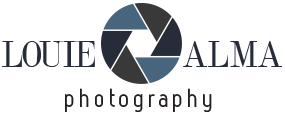Aldi’s new video doorbell is a must-have for improving your home’s security this autumn – it’s only £16.99
Photoshop Blend Modes Simplified for Beginners (VIDEO)
Are you one of those inexperienced Photoshop users who avoid taking advantage of Blend Modes because you feel that your rudimentary skills aren’t up to the task? We’ll forgive this common misconception because, after all, there are 27 Blend Modes from which to choose. And that sounds quite complicated.
Hold on though because today’s quick lesson from the Photoshop Together YouTube channel demystifies how Blend Modes work, organizes them into manageable groups for different purposes, and provide real-world examples that illustrate how each group affects tone and color.
Our unnamed instructor has been working with Photoshop for years but says he learns something new every day, and we hope you consider this straightforward episode a useful revelation. Along the way you’ll also gain a greater appreciation for how layers interact.
The lesson begins by breaking down all 27 Blend Modes and demonstrating exactly how each option contributes to key image-quality attributes. Our instructor promises that in barely six minutes “you’ll finally understand why Multiply darkens, Screen brightens, and Overlay boosts contrast.” There are also simple instructions for of combining them like a pro.
The beauty of this particular approach is how Photoshop’s 27 Blend Modes are sorted into six discrete groups; namely, Normal, Darken, Lighten, Contrast, Comparative, and Component. This approach greatly simplifies the process by directing it toward the specific image at hand. Then you can focus on other modes only when they’re called for.
Once the video concludes you’ll feel confident about choosing the most appropriate Blend Mode for processing outdoor photographs, portrait retouching, color grading, and more. You’ll also pick up interesting tips for removing white backgrounds and enhancing nature and landscape photos with a cinematic glow.
Be sure to pay a visit to the Photography Together YouTube channel for a wide variety of helpful tips and techniques.
And don’t miss the tutorial we featured earlier with another Adobe expert who reveals a “massive” post-processing mistake that will make your photographs look amateurish and overcooked. Then he demonstrates a thoughtful solution that delivers beautiful natural-looking results.
6 Tips for Long Lens Landscapes
Advertisement
Subscribe to Our Newsletter
Popular Posts
Pages
- 360 Interactive Virtual Tour Sample
- About the Photographer
- Business Portrait Photography
- Concert Photography
- Event Photography
- Fashion Photography
- Food Photography
- Landscape Photography
- Portrait Photography
- Product Photography
- Real Estate Photography
- Sport Photography
- Still Photography
- Street Photography
- Travel Photography
- Videography





